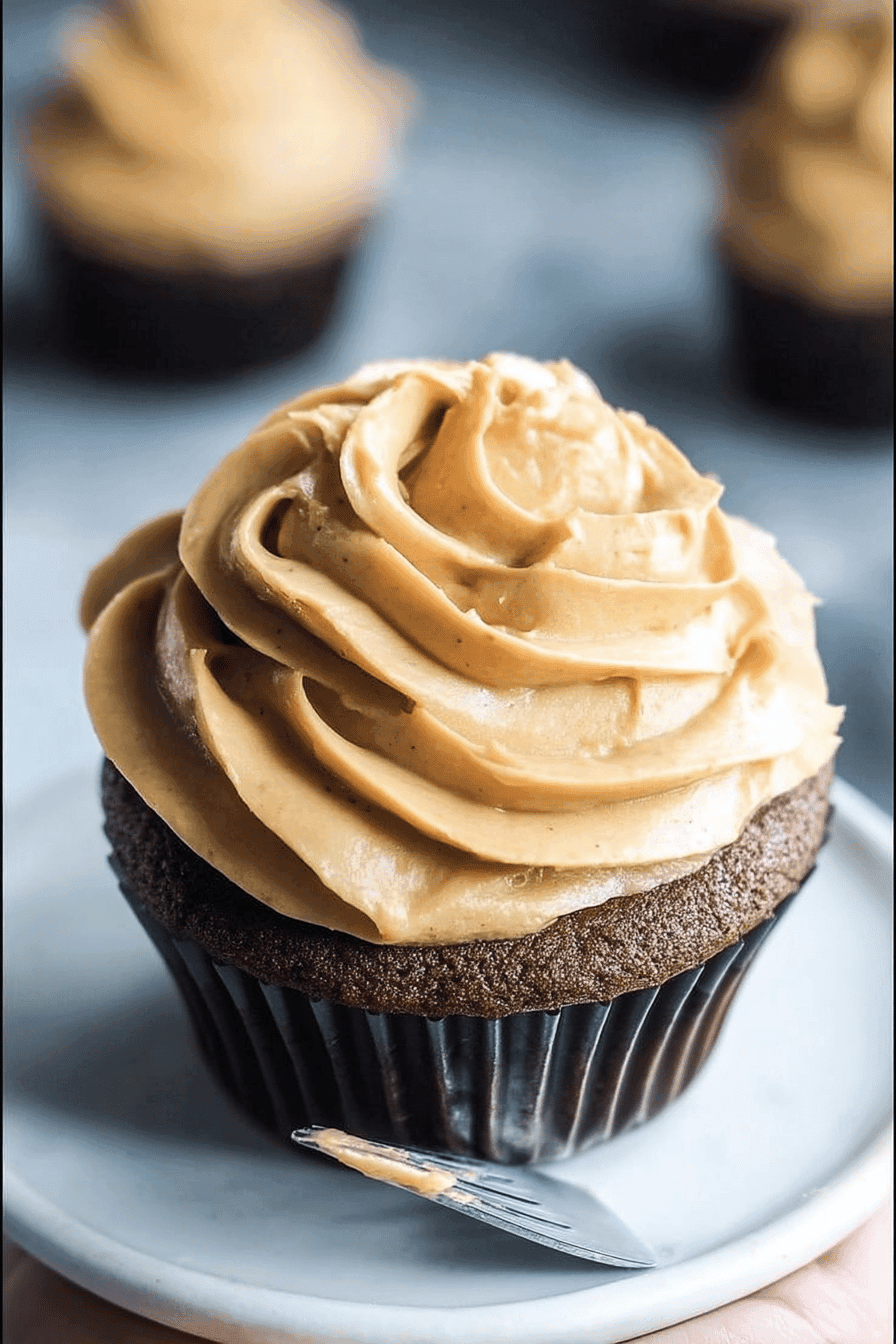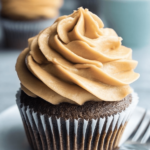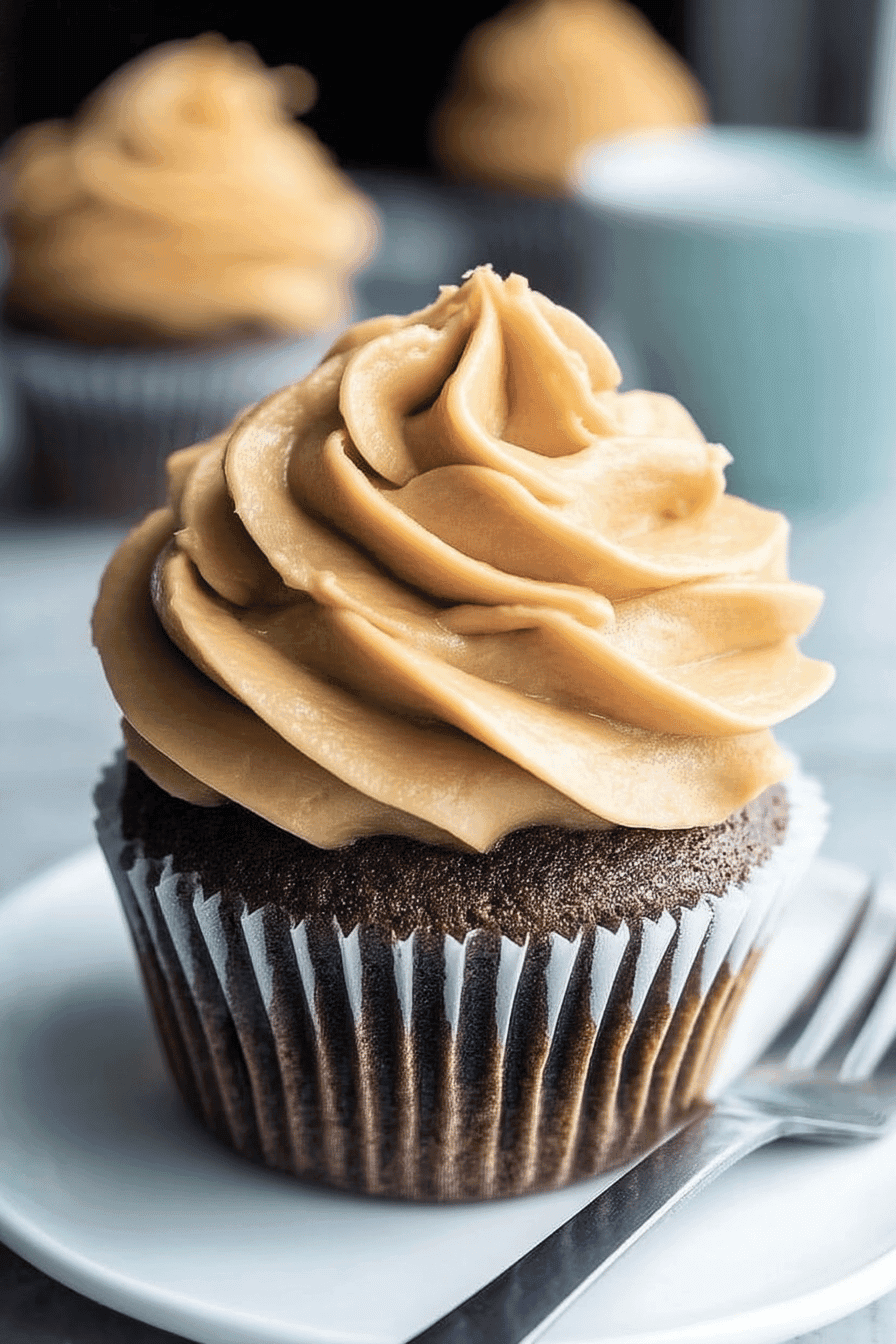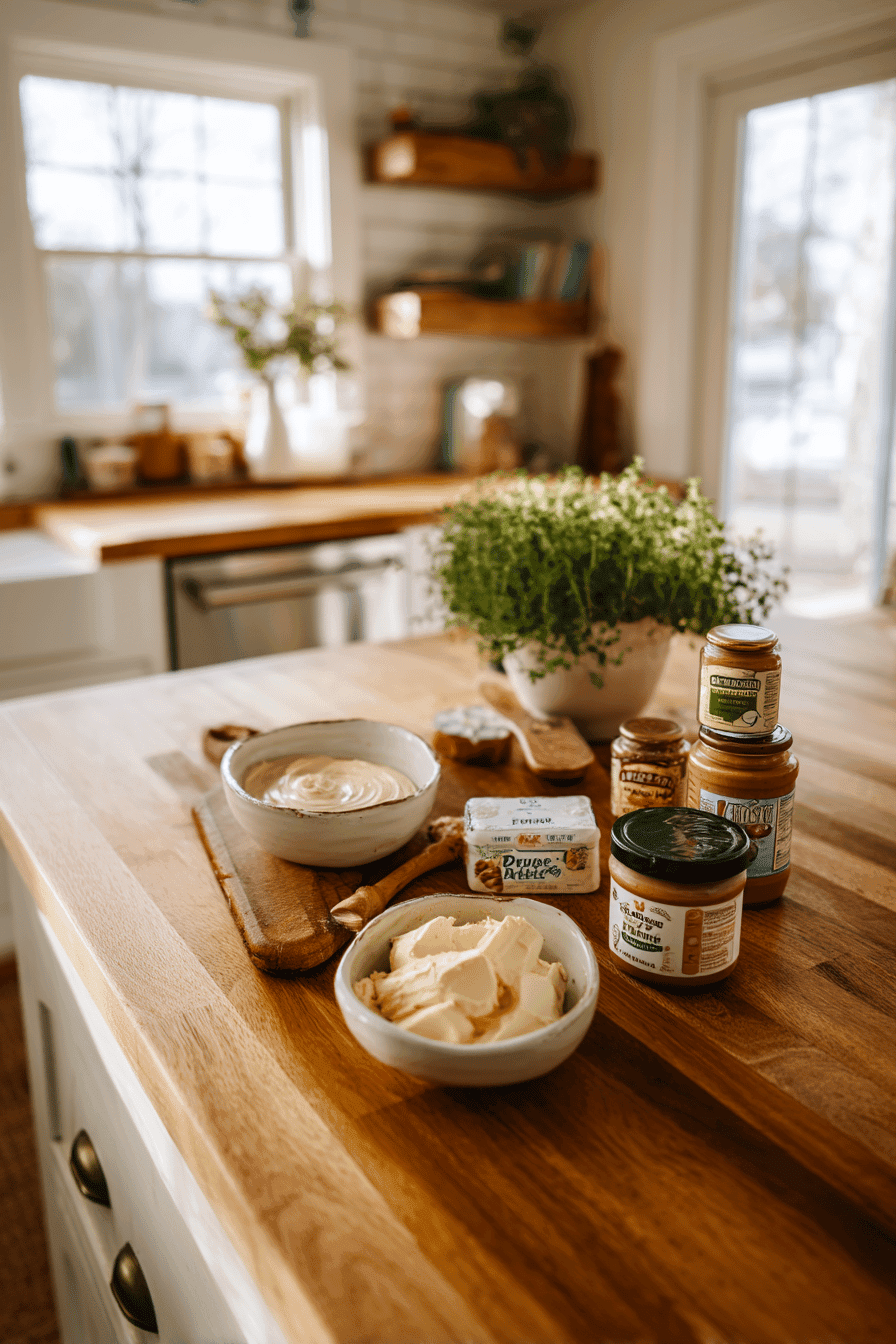Benefits and Advantages of Peanut Butter Frosting Recipe
The peanut butter frosting recipe is well-loved for its quick preparation and delightful creamy texture, which complements a wide range of desserts without being overly sweet. This frosting blends the rich taste of peanut butter with a balance of sweetness, creating a flavor profile that appeals to many. One notable advantage is its nutritional edge; incorporating natural peanut butter adds protein and healthy fats, making it a more wholesome alternative to many traditional frostings. Additionally, the recipe is versatile, adaptable to different dietary needs such as vegan, gluten-free, or low-calorie diets. Its simplicity and flexibility, paired with the wholesome qualities of peanut butter, make this frosting recipe a favorite for bakers seeking both flavor and nutrition in their dessert toppings.
Jump To
- 1. Benefits and Advantages of Peanut Butter Frosting Recipe
- 2. Essential Ingredients for Peanut Butter Frosting Recipe
- 3. Dietary Substitutions to Customize Your Peanut Butter Frosting Recipe
- 4. How to Prepare the Perfect Peanut Butter Frosting Recipe: Step-by-Step Guide
- 5. Advanced Tips and Variations for Peanut Butter Frosting Recipe
- 6. How to Store Peanut Butter Frosting Recipe: Best Practices
- 7. Nutritional Value of Peanut Butter Frosting Recipe
- 8. FAQs: Frequently Asked Questions About Peanut Butter Frosting Recipe
- 9. Light and Creamy Fluffy Peanut Butter Frosting Recipe
Essential Ingredients for Peanut Butter Frosting Recipe
This peanut butter frosting recipe uses a few key ingredients that come together to form a smooth, fluffy, and flavorful topping:
- 1 cup (226 g) unsalted butter, softened to room temperature
- 1 cup (245-270 g) creamy peanut butter (preferably processed type; avoid natural peanut butter that separates)
- 1 to 3 cups (114-375 g) powdered sugar (adjustable to reach desired frosting thickness)
- 1 teaspoon vanilla extract or vanilla bean paste
- ½ teaspoon salt (omit if using salted butter)
- 2 to ⅓ cup (2 tablespoons to 80 ml) milk or heavy cream, room temperature (adjust for texture)
Each ingredient plays a specific role: peanut butter provides creaminess and protein, powdered sugar adds sweetness, butter ensures smooth binding and texture, while vanilla enriches the aroma. Milk or cream adjusts consistency to suit preferences, making the frosting easy to spread or pipe.
Dietary Substitutions to Customize Your Peanut Butter Frosting Recipe
To accommodate different dietary requirements or ingredient options, various substitutions can be made in this peanut butter frosting recipe:
Dairy-Free and Vegan Options
- Replace unsalted butter with vegan margarine or coconut oil for a dairy-free version that retains creaminess.
- Use plant-based milks such as almond, oat, or soy milk instead of cow’s milk to keep the recipe vegan and lactose-free.
Low-Calorie and Sugar Alternatives
- Swap powdered sugar with natural, low-calorie sweeteners like erythritol or monk fruit sweetener to reduce carbohydrate content without sacrificing sweetness.
Nut-Free Variations
- Use sunflower seed butter or soy nut butter as a peanut-free alternative that matches the texture and flavor profile well.
Gluten-Free Considerations
- Ensure powdered sugar is labeled gluten-free, and check that peanut butter contains no gluten additives for a safe option for gluten-conscious individuals.
These substitution options allow the peanut butter frosting recipe to be tailored for diverse nutritional needs and ingredient availability, ensuring flexibility without compromising taste or texture.

How to Prepare the Perfect Peanut Butter Frosting Recipe: Step-by-Step Guide
- Beat the Butter: Place softened unsalted or vegan butter in a large mixing bowl. Using a hand mixer or stand mixer, beat on medium speed until creamy and smooth.
- Add Peanut Butter: Gradually add creamy peanut butter to the butter, mixing thoroughly until well combined and fluffy.
- Incorporate Powdered Sugar: Slowly sift in powdered sugar or a sugar substitute about one-third cup at a time. Mix on low speed after each addition to prevent lumps and promote a smooth texture. Scrape the bowl occasionally.
- Flavor Boost: Add 1 teaspoon vanilla extract and ½ teaspoon salt (if unsalted butter is used), mixing briefly to blend evenly.
- Adjust Texture: Add milk, heavy cream, or plant-based milk one teaspoon at a time if the frosting is too thick. Continue beating on low speed until reaching a creamy, spreadable consistency.
- Customize for Diets: For vegan or low-sugar versions, substitute ingredients according to dietary needs during mixing steps.
- Use or Store: Once creamy and fluffy, the frosting is ready for immediate use on cakes, cupcakes, or cookies. If needed, store properly to maintain freshness and texture.
This detailed process ensures a smooth, creamy peanut butter frosting that is customizable and easy to prepare for all bakers.
For more tips on achieving smooth, fluffy frostings, visit How to make smooth frosting.
Advanced Tips and Variations for Peanut Butter Frosting Recipe
To achieve a perfectly creamy and flavorful peanut butter frosting, consider these advanced tips and creative variations that suit different palates and occasions:
Texture and Flavor Enhancements
- Chill Butter Before Mixing: Using chilled, but softened butter and whipping it thoroughly helps incorporate air, resulting in lighter, fluffier frosting.
- Choose the Right Peanut Butter: Opt for processed creamy peanut butter for the smoothest texture. Natural peanut butter tends to separate and can cause an oily or gritty frosting. Chunky peanut butter can be used but may clog piping nozzles.
- Add a Pinch of Salt: A small amount of salt balances the sweetness and enhances the peanut butter flavor.
Flavor Variants
- Chocolate Peanut Butter Frosting: Mix in 2-3 tablespoons of unsweetened cocoa powder for a rich chocolate twist.
- Maple or Honey Sweetened: Substitute part of the powdered sugar with maple syrup or honey to introduce natural sweetness and subtle flavor depth.
- Nut and Chocolate Mix-ins: Stir in chopped peanuts, mini chocolate chips, or even crushed pretzels for texture and added interest.
- Seasonal Spices: Incorporate cinnamon, pumpkin pie spice, or nutmeg for festive variations.
These variations allow you to tailor the peanut butter frosting to personal preferences, creating unique, delicious toppings that suit every dessert and occasion.
How to Store Peanut Butter Frosting Recipe: Best Practices
Proper storage is key to maintaining the freshness, texture, and flavor of your peanut butter frosting. Follow these guidelines for best results:
Refrigeration
Store the frosting in an airtight container in the refrigerator, where it will remain fresh for up to one week. Before use, remove it from the fridge and allow it to come to room temperature for about 30 minutes. Whip or stir it gently to restore its creamy, spreadable consistency.
Freezing
- For long-term storage, freeze the frosting in a well-sealed container or heavy-duty freezer bag to prevent freezer burn.
- Frozen frosting will keep for up to three months.
- Thaw overnight in the refrigerator, then bring briefly to room temperature and whip gently to regain fluffiness before applying to cakes or cupcakes.
- Avoid microwaving the frosting as heat can cause separation and an undesirable texture.
Following these storage practices helps keep your peanut butter frosting fresh, creamy, and ready to use whenever needed.
Nutritional Value of Peanut Butter Frosting Recipe
This peanut butter frosting offers a balance of indulgent flavor and meaningful nutrition components. Below is an approximate breakdown per 1/12 batch serving:
| Nutrient | Amount per Serving | Notes |
|---|---|---|
| Calories | 232 – 381 | Varies with amount of powdered sugar and milk/heavy cream used. |
| Fat | 18 – 26 g | Includes healthy unsaturated fats from peanut butter and saturated fats from butter. |
| Saturated Fat | 7 – 12 g | Primarily from butter, can be reduced by using margarine or vegan butter. |
| Protein | 5 – 6 g | Higher than many frostings due to peanut butter content. |
| Carbohydrates | 15 – 34 g | Mostly from powdered sugar; lower with sugar substitutes. |
| Sugar | 12 – 32 g | Amount depends on sugar used; consider alternatives to reduce sugar. |
| Cholesterol | 20 – 41 mg | From butter; option to reduce by using non-dairy fats. |
| Fiber | 1 g | Small amount from peanut butter. |
| Vitamin A | 243 – 477 IU | Provided by butter. |
| Calcium | 16 – 17 mg | From dairy components in butter and milk. |
Peanut butter provides protein and healthy fats, while the frosting’s sweetness comes mostly from powdered sugar. For health-conscious adaptations, use low-calorie sugar substitutes and plant-based butter alternatives. More on powdered sugar nutrition can be found here.

FAQs: Frequently Asked Questions About Peanut Butter Frosting Recipe
What type of peanut butter should I use for peanut butter frosting?
Answer guidance: Clearly state that creamy, processed peanut butter (e.g., Jif or Skippy) works best due to its smooth consistency. Explain why natural peanut butter is not suitable—because of oil separation and affecting texture. Mention how chunky peanut butter affects piping. Use natural language to match user queries.
Can I pipe peanut butter frosting on cakes or cupcakes?
Answer guidance: Confirm that this frosting can be piped and describe the types of piping styles it supports (simple swirls rather than intricate designs). Include tips for achieving good consistency for piping. This directly answers common decorating concerns.
How do I store peanut butter frosting, and how long does it last?
Answer guidance: Provide storage options including refrigeration (up to 3 days), freezing (up to 3 months), and room temperature handling. Include thawing and re-beating instructions for best texture after freezing. Address common food safety and storage questions.
Can I make peanut butter frosting dairy-free?
Answer guidance: Explain dairy-free substitutions, such as using margarine, shortening, or plant-based cream alternatives. Note any potential flavor or texture differences. This helps address dietary restrictions and broadens the recipe’s appeal.
How much peanut butter frosting do I need for my cake or cupcakes?
Answer guidance: Offer clear quantity guidelines (e.g., covers 12 cupcakes generously, 9×13 cake, or 2-layer 8-9 inch cake). This helps users plan and avoid waste. Include examples to help users visualize portion sizes.

Light and Creamy Fluffy Peanut Butter Frosting Recipe
- Total Time: 5-10 minutes
- Yield: Enough to generously cover 12-15 cupcakes or modestly frost 24 cupcakes, a 9×13-inch sheet cake, or an 8″ to 9″ two-layer cake
- Diet: Vegetarian
Description
🥜 Enjoy a light and creamy peanut butter frosting that adds rich flavor without heaviness.
🎂 Perfect for frosting cupcakes, cakes, or desserts with a fluffy and smooth texture.
Ingredients
1 cup (226 g) unsalted butter, softened to room temperature
1 cup (245–270 g) creamy peanut butter (processed type recommended; avoid natural peanut butter that separates)
1 to 3 cups (114–375 g) powdered sugar (adjust for desired frosting thickness)
1 teaspoon vanilla extract (or vanilla bean paste)
½ teaspoon salt (omit if using salted butter)
2 to ⅓ cup (2 tablespoons to 80 ml) milk or heavy cream, room temperature (adjust for texture)
Instructions
1. In a large bowl, beat the softened butter and creamy peanut butter together with an electric mixer until smooth and well combined.
2. Gradually add powdered sugar, about one-third cup at a time, mixing on low speed and scraping the sides and bottom of the bowl as needed.
3. Stir in vanilla extract and salt.
4. Add milk or heavy cream while mixing on low speed.
5. Increase mixer speed to high and beat for 30 seconds to 3 minutes until light, fluffy, and creamy.
6. Adjust frosting thickness by adding additional powdered sugar for stiffer consistency or more milk/heavy cream for a thinner one.
7. Use immediately or store in an airtight container.
Notes
🥄 Processed creamy peanut butter delivers the best texture; avoid natural types that separate.
🧈 Make sure butter is softened but not melted to keep frosting smooth.
❄️ Store leftover frosting in the fridge for up to a week or freeze for up to three months; re-whip before use.
- Prep Time: 5-10 minutes
- Category: Frosting
- Method: Mixing
- Cuisine: American
Nutrition
- Serving Size: About 1/12 batch serving
- Calories: 232-381
- Sugar: 12-32 g
- Sodium: 143-199 mg
- Fat: 18-26 g
- Saturated Fat: 7-12 g
- Unsaturated Fat: Not specified
- Trans Fat: Not specified
- Carbohydrates: 15-34 g
- Fiber: 1 g
- Protein: 5-6 g
- Cholesterol: 20-41 mg
Keywords: peanut butter frosting, creamy frosting, fluffy frosting, easy frosting


